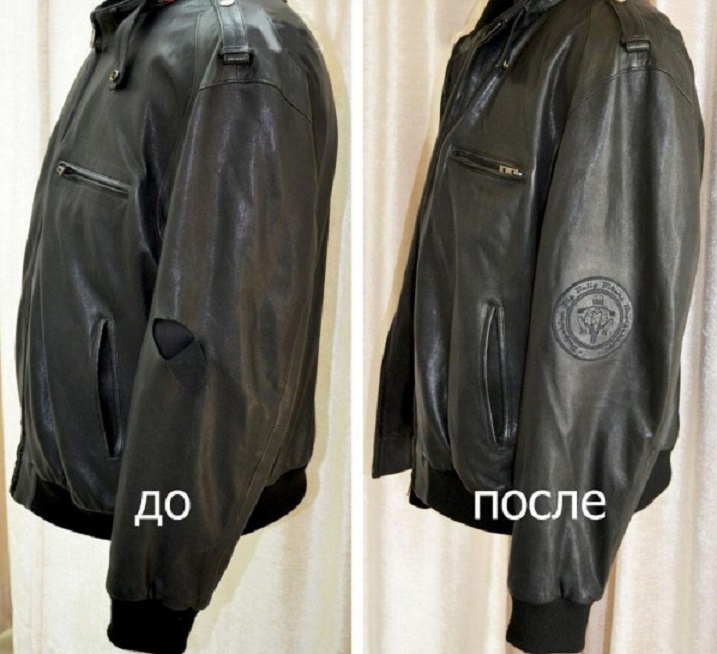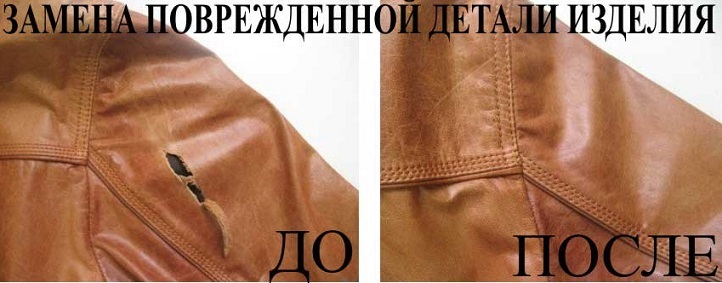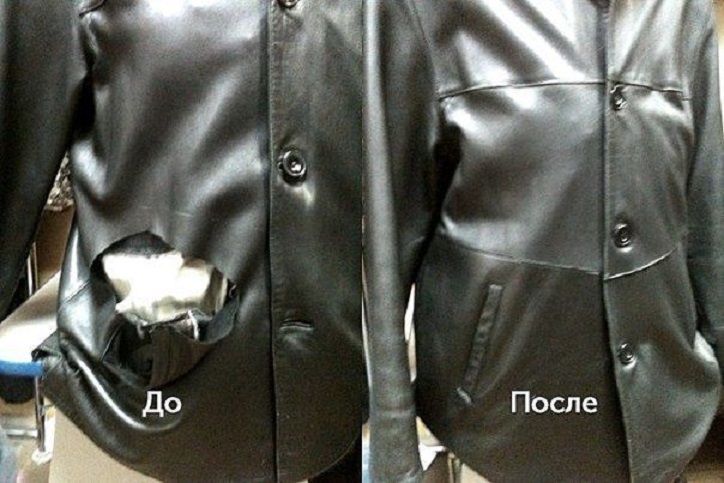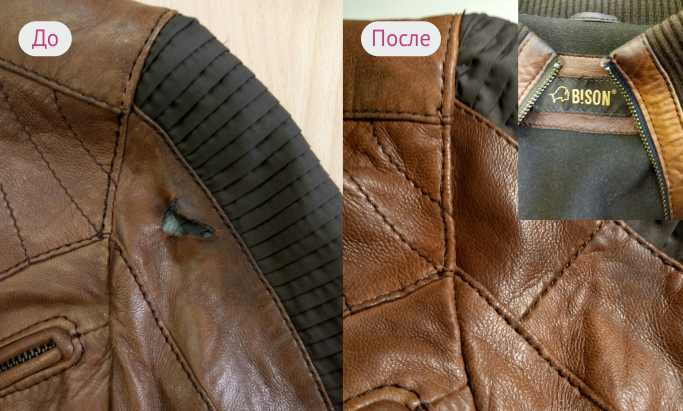Ways to seal, seal, sew a hole on a leather jacket.
Content
- How and how to seal the hole on the skin of a leather jacket?
- How to seal a hole on a leather jacket with glue from the inside?
- How to seal a hole on a leather jacket with double -sided tape or patch from the inside?
- How to remove a hole on a leather jacket using a decorative seam?
- Restoration of a torn leather jacket in specialized studio: Ideas
- Video: How to seal a leather jacket?
A leather jacket is one of the most favorite products. Because leather clothes are popular and stylish at any time. Despite the fact that leather things are durable, the formation of holes or ruptures is not excluded. In this article, we will tell you how to seal, close up or sew a hole in the skin.
How and how to seal the hole on the skin of a leather jacket?
There are several options to seal the hole on the skin, depending on the shape, as well as the size of the damage. If the skin is pulled out with a corner, while the piece itself remained in place, but it is torn, you will need glue, as well as a patch that will be invested from the inside. Nothing needs to be glued outside.
Mopping glue is suitable for gluing the skin, and it is advisable to choose a transparent option. Because classic glue has a yellow color with a brown tint, which will be very visible on dark skin even after staining.
You can not use super glue based on cyanoacrylate to seal leather items. The fact is that such substances very often after drying form a solid crust. In this section, the products are simply crumbled, even a large hole is formed. Therefore, it is necessary to purchase a special glue for the skin or the usual a transparent moment. After drying, it becomes rubber and flexible, which is necessary in time to socks a leather jacket.
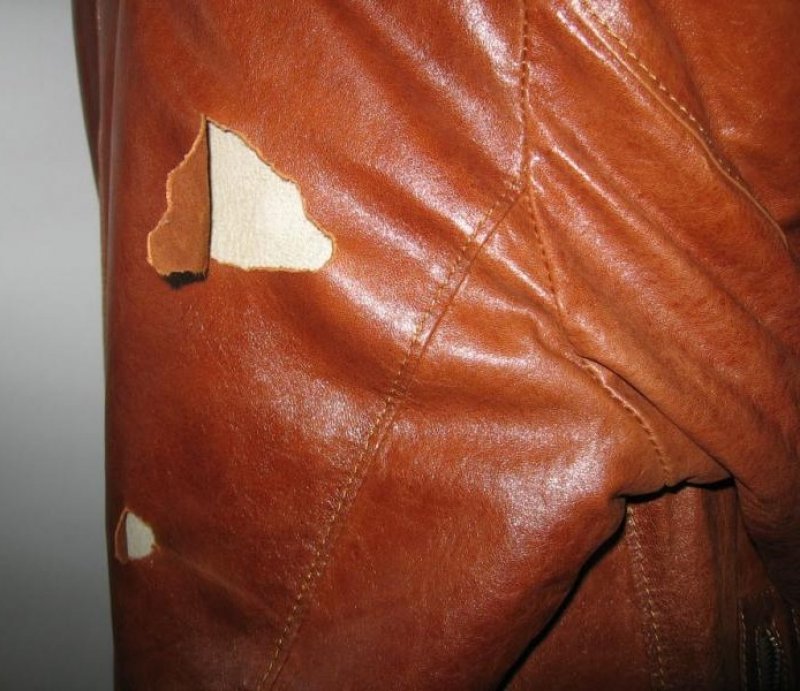
How to seal a hole on a leather jacket with glue from the inside?
Most often, outerwear, such as jackets and raincoats, suffer from cuts and gaps. Often there are holes in the area of \u200b\u200bsleeves and pockets. This is due to the fact that you can catch in transport for some sharp object. In the area of \u200b\u200bpockets, the skin is torn due to the fact that heavy objects are put inside, which contributes to skin tension. In addition, the constant folding of hands in the pockets also contributes to the appearance of holes and cracks in the lower part of the jacket.
Instructions:
- In order to seal the hole on the skin, you need to select the material and evaluate the size of the damage. You will also need a patch of similar leather that you will use outside and inside.
- Next, you need to tear off the lining, carefully cut it from the inside. This is done in order to get to the inside of the hole. Now it is necessary to cut the patch, which is 1 cm around the perimeter more than the damaged place.
- Lubricate the patch with glue and press tightly to the hole. Many experts recommend not to be mistaken and bring the contours as close as possible both outside and inside, use transparent adhesive tape. To do this, take a piece of ordinary stationery adhesive tape, glue it outside, bringing the joint as much as possible into the joint.
- After that, you can start performing internal work. Thus, even with constant movement and movement of the jacket, the corners will not be shifted. You will be able to end up the joints absolutely evenly.
- After you have glued the patch, from the inside you must press the material with something heavy. Some kind of load is suitable. It needs to be left for a few minutes so that the glue is completely dry. Gently remove the tape, see how good the incision looks now.
- Take the toothpick in the glue and smear all the joints, pieces of the skin. Gently press and remove the remnants of the glue with rolling movements. It will collect like rubber. Let it dry. If you look closely, the junction will be seen. In order to completely hide it, we recommend painting the product with special skin paints or cream. Please note that the cream is less persistent and wipes over time. Therefore, we recommend painting products for skin paint.



How to seal a hole on a leather jacket with double -sided tape or patch from the inside?
It is possible to repair a cutting skin, that is, a section or strip that is not characterized by chaotic edges, using double -sided tape.
Instructions:
- To do this, you need to choose a patch of leather, which is glued on the back. First you need to tear off the lining from the inside to get to the cut. Choose a patch of leather, which slightly goes beyond the edges of the cut by about 1 cm. Attach to cut from the inside.
- Glue the tape or patch on the back so that it completely covers the patch. Squeeze the edges of the cut as tightly as possible, bringing them to each other. You need to glue the adhesive tape from the outside. It is necessary to paint the product, because the adhesive tape is distinguished by flexibility, which will attract any garbage. Over time, it will look unsightly, then sew the lining.
- Basically, this method is used only to strengthen.
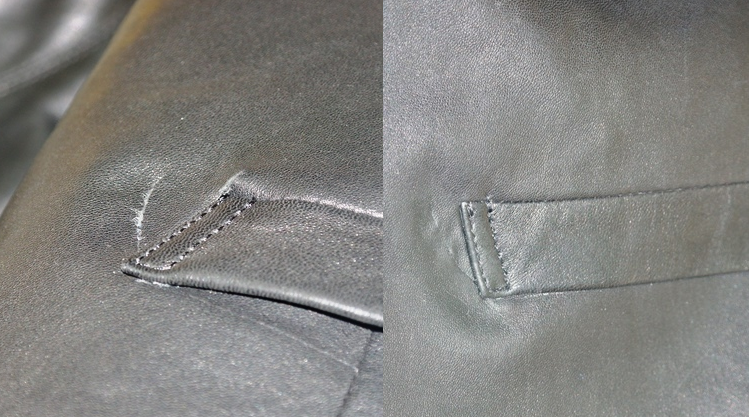
How to remove a hole on a leather jacket using a decorative seam?
- In order for the edges of the product to not move relative to each other, a decorative line or seam is applied. Despite the fact that it is not very difficult to seal the skin, the best option for repairing such products is the seam.
- If you are afraid that it will be very noticeable, you can make decorative patches and decorate them with seams. If this is just a cut area, there is a direct section, you can cope with a patch in the form of a lace. It is cut out in the shape of a hole and is located in the form of a decorative element. It is sewn with a seam goat. Below is the scheme of this seam. It turns out very pretty and unusual.

If these are holes under the pockets, you can make decorative patches that are sheathed with unusual variations of the seams. For symmetry, patches are made on both sides near the pockets.

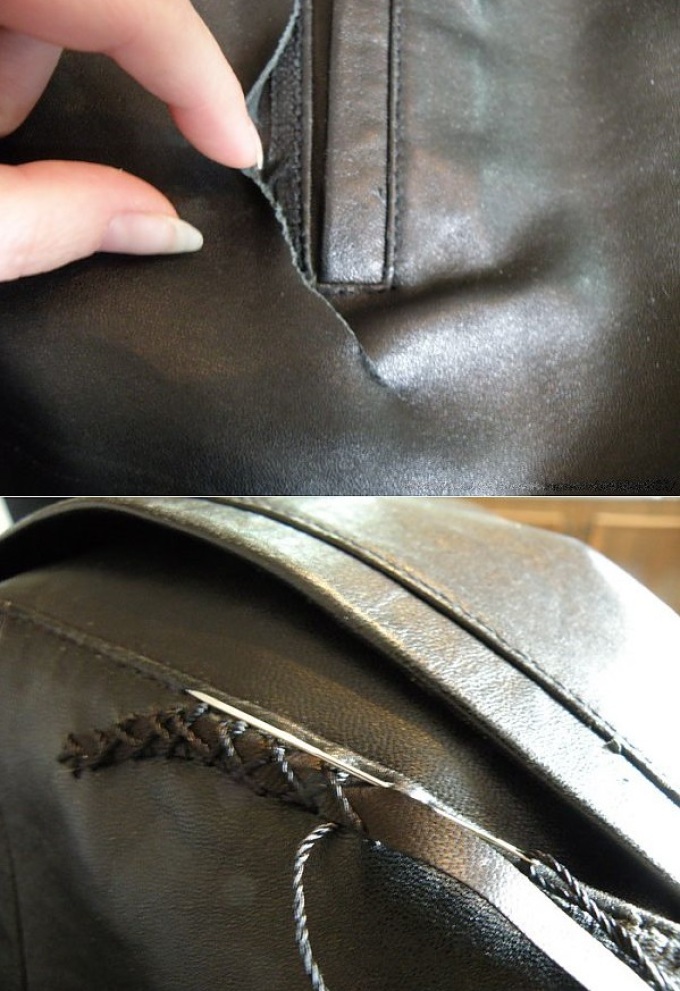


Restoration of a torn leather jacket in specialized studio: Ideas
A better repair of a torn jacket will be made in an atelier, replacing a separate part or setting up a lining on top of the torn. Below in the photo, see examples of restored leather jackets.
